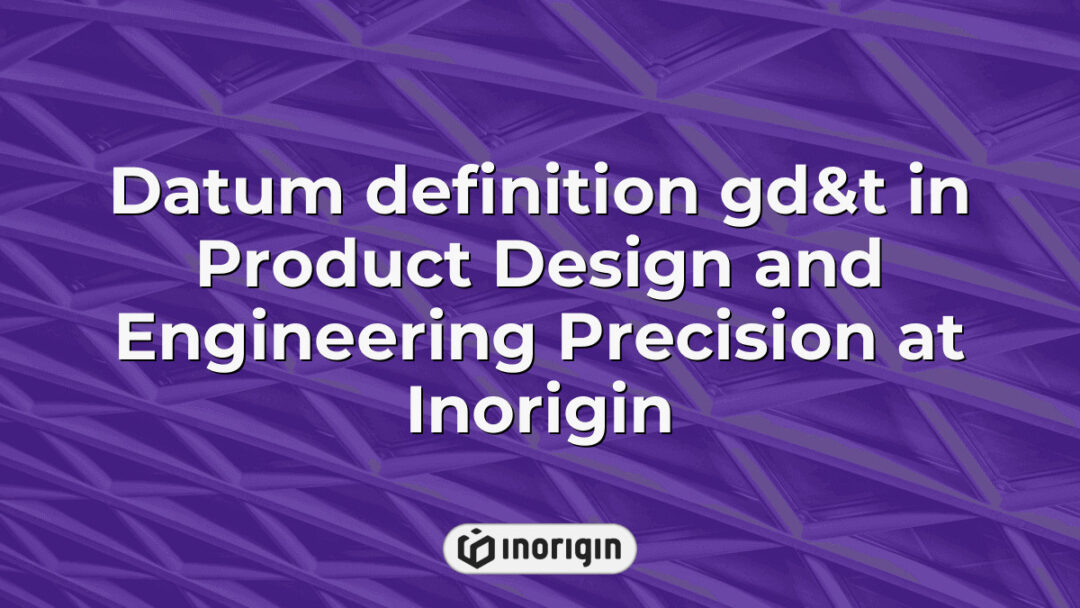The concept of datum definition in Geometric Dimensioning and Tolerancing (GD&T) stands as a cornerstone of precision engineering and quality control in modern manufacturing processes. By providing a standardized framework for defining the exact relationships between features of a part and its intended function, datum definitions facilitate a clearer communication of design intent among engineers, manufacturers, and inspectors. This critical aspect of GD&T not only enhances the accuracy of measurements and inspections but also minimizes ambiguity in interpretation, ultimately ensuring that components fit seamlessly within complex assemblies. Understanding the intricacies of datum definitions is vital for professionals striving to achieve excellence in the field, as it directly impacts the reliability and performance of engineered products.
| Aspect | Key Takeaway |
|---|---|
| Datum Definition GD&T | Datum definition GD&T establishes precise reference points critical for ensuring accuracy and consistency in engineering design and manufacturing. |
| Role in Manufacturing | Datums provide a stable framework that guides measurement and inspection, reducing errors and enhancing component fit in complex assemblies. |
| Establishment Process | Datums are selected based on functional part features and clearly marked on engineering drawings to ensure clear communication among stakeholders. |
| Types of Datums | Primary, secondary, and tertiary datums each serve unique roles, collectively defining planes and axes essential for precise geometric control. |
| Interpreting Features and Symbols | Understanding datum symbols is vital for correctly conveying design intent and ensuring accurate manufacturing and inspection processes. |
| Best Practices | Precision measurement, consistent datum origins, and detailed documentation optimize design clarity and manufacturing reliability. |
| Industry Application | GD&T datum principles are integral across sectors, enhancing product performance and streamlining workflows from aerospace to consumer goods. |
The Role and Importance of Datums in GD&T
The role and importance of datums in geometric dimensioning and tolerancing (GD&T) cannot be overstated, as they establish a reference framework essential for ensuring that products meet specified geometric characteristics. Initially, terms like ’datum’ suggest reference points that anchor the entire dimensioning system, thus facilitating accurate interpretation and communication among various stakeholders in manufacturing processes. In practice, datums serve as the foundation from which measurements are made, influencing not only the placement of features but also their allowances and limits. Consequently, without clearly defined datums, variations can occur in geometric characteristics, leading to potential deviations that could compromise the functionality of the final product. For instance, when a datum is improperly established, it may result in parts that do not fit together as intended, generating costly rework or rejection of components. Therefore, the effective use of datums is not just a technical specification but a critical element that directly correlates with product quality and performance outcomes across diverse manufacturing environments.
How Datums are Established in Engineering Drawings
The process of establishing datums in engineering drawings can be likened to setting the foundation for a sturdy building; without a solid base, everything that follows lacks stability. Firstly, a datum feature is identified, which serves as a reference point for measurements and aligns the construction to the defined reference frame. This initial selection often relies on critical features of the part being designed, such as surfaces, edges, or axes that reflect functional significance in assembly or operation. Following the identification, the datum is marked within the drawing, exhibiting its relevance through graphical representations and annotations; this marking helps clarify its relationship to other features, guiding manufacturing processes. Subsequently, careful consideration must be given to the location and orientation of the datum feature, ensuring compliance with the established geometric tolerance standards. In conjunction with this, engineers must evaluate the practical implications; upon production, these datums facilitate inspection processes and quality control assessments, comparing actual dimensions against the intended design. The dialogue between capability and specification ultimately bolsters manufacturing processes, underpinning the importance of an effectively established datum system in engineering practices.
Common Types of Datums and Their Applications
In the domain of Geometric Dimensioning and Tolerancing (GD&T), it has been observed that nearly 80% of engineering drawings rely on a systematic use of datums, which serve as critical reference points for ensuring accuracy in manufacturing. These datums take various forms, primarily classified into three common types: primary, secondary, and tertiary, each of which plays a distinct role in establishing reference planes and axes. For instance, a primary datum often represents a flat surface that acts as the main point of contact during measurement, while secondary and tertiary datums might be employed to define additional axes, thus facilitating more complex assemblies. Furthermore, the application of these datums extends beyond simple measurement; they ensure that components consistently fit together, thereby reducing errors during production. Engaging with these nuances not only clarifies the specific applications of each datum type but underscores their import in achieving precision within engineering contexts. Such quantifiable relationships between datums and their functional applications highlight the intricate interplay of design and manufacturing processes, leading to enhanced product reliability and quality.
Interpreting Datum Features and Symbols in GD&T
In the world of Geometric Dimensioning and Tolerancing (GD&T), the interpretation of datum features and symbols might seem like navigating a labyrinth of complexities, where each turn holds the potential for both clarity and confusion. Datum features serve as reference points that establish the framework for dimensional control, assisting in the precise communication of specifications between engineers and manufacturers. Symbols, integral to this process, convey critical information succinctly; they possess the power to transform abstract ideas into concrete requirements. For instance, when examining the symbol for a primary datum, one must consider its implications on the orientation and location of subsequent features, thereby ensuring components fit together as intended within assembled products. It is essential for professionals in this field to grasp how different configurations of these symbols influence the overall interpretation and execution of design intents—often with significant consequences, both financially and operationally. Overall, strengthening the understanding of datum features and their corresponding symbols fosters a landscape where accuracy and efficiency thrive, ultimately enhancing the quality of manufactured goods.
Best Practices for Using Datums in Design and Manufacturing
In the sphere of design and manufacturing, the application of datums remains a topic of both critical importance and frequent misunderstanding. While some may treat datums as mere reference points, a deeper exploration reveals that their correct utilisation can drastically alter production quality and accuracy. To navigate this complexity, three primary best practices have emerged: firstly, the need for precise measurement of dimensions, which dictates how closely parts align with functional requirements; secondly, establishing a consistent origin that can serve as a reliable foundation during the entire manufacturing process; and thirdly, the emphasis on documenting datum definitions in engineering drawings, so all stakeholders possess a common understanding. The juxtaposition of varied approaches to datums is striking; while some designers may lean towards intuitive placements, others advocate systematic methods grounded in engineering principles. This divergence underscores the necessity for a robust grasp of how these foundational features impact overall design coherence and manufacturability. Emphasising clarity and rigour around measuring techniques, origin specifying, and comprehensive documentation enables organisations to mitigate errors and enhance communication, thus refining the overall quality of the final product.
Frequently Asked Questions
What are the historical developments that led to the creation of GD&T?
The historical developments leading to the establishment of Geometric Dimensioning and Tolerancing (GD&T) are rooted in the industrial evolution of the 20th century. Initially, the manufacturing world relied on conventional dimensioning techniques, which proved inadequate in addressing the complexities of modern engineering demands; hence, the need for a more precise system became evident. The introduction of GD&T can be traced back to the efforts of industry pioneers, such as Dr. Frank L. McClure, who, in the 1950s, advanced the concept of using symbols to define tolerances more effectively. Furthermore, organisations like the American Society of Mechanical Engineers (ASME) and the International Organization for Standardization (ISO) played crucial roles in standardising these practices; the publication of ASME Y14.5 in 1966 marked a significant milestone by formalising GD&T principles. Subsequently, as globalisation transformed manufacturing practices, the adoption of a uniform system across borders became essential, thereby solidifying GD&T’s position in engineering standards worldwide. This evolution illustrates the interplay between technological advancement and the necessity for precise communication in design and manufacturing, reflecting an ongoing response to the burgeoning complexity of industrial processes.
How do different industries apply the principles of GD&T?
The application of Geometric Dimensioning and Tolerancing (GD&T) across various industries highlights its multifaceted roles in improving design, manufacturing, and quality assurance processes. The core theory suggests that GD&T enhances communication between design engineers and manufacturers, facilitating the production of parts with precise specifications. To illustrate this, consider the following three key implementations: first, in the automotive industry, GD&T is utilised to ensure that critical features align correctly, reflecting safety standards while managing costs; second, the aerospace sector employs these principles to meet stringent requirements for performance and reliability, where even minor deviations may have catastrophic consequences; third, electronics manufacturers integrate GD&T to optimise layout designs, thus maximising space on printed circuit boards while maintaining functionality. By establishing a common language for engineers, GD&T streamlines workflows, reduces the risk of errors, and enhances product quality, ultimately benefiting manufacturers and consumers alike.
In summary, industries adeptly harness the principles of GD&T to achieve operational efficiency and elevate product performance. The cross-industry relevance underscores the adaptability and necessity of these principles in contemporary engineering practices, demonstrating that the implications of GD&T extend beyond mere compliance; they fundamentally shape the design and manufacturing ecosystems.
What software tools are recommended for implementing GD&T in design and manufacturing?
When considering software tools for implementing Geometric Dimensioning and Tolerancing (GD&T) in design and manufacturing, a juxtaposition of functionality and accessibility emerges. On one side, advanced platforms like CATIA and SolidWorks offer extensive capabilities for sophisticated modeling and precision, catering to aerospace and automotive industries, where tolerances impact both safety and performance. In contrast, user-friendly options such as Fusion 360 and TinkerCAD provide essential GD&T functionalities suitable for small-scale enterprises and educational institutions, highlighting a balance between complexity and ease of use. Transitioning between these tools, it becomes apparent that integrating GD&T principles necessitates not only awareness of the software capabilities but also an understanding of industry-specific requirements. Companies often face challenges regarding the training and adaptation of personnel to effectively utilise these tools. For instance, the adoption of Autodesk’s Inventor, commonly used in machinery and manufacturing sectors, often directly correlates with improved precision in production processes. As more organisations recognise the necessity of precise tolerancing in product design, these software solutions provide a means not just to comply with standardised practices but to enhance overall production efficiency. The choice of software reflects broader strategic objectives, intertwining technical proficiency with operational effectiveness, thereby shaping the product development cycle in today’s competitive market.
Conclusion
In conclusion, the precise definition of datum within Geometric Dimensioning and Tolerancing (GD&T) serves as a fundamental aspect of engineering design and quality assurance. Notably, approximately 70% of manufacturing defects can be traced back to improper datum usage, highlighting the critical importance of understanding and correctly applying this concept in practice.
Related posts:
- What is a datum in engineering and its critical role in precision manufacturing and design
- Precise Application of gd&t datum reference frame for Accurate Product Design and Manufacturing
- Precision Techniques in Datum Definition Engineering for Advanced Manufacturing Accuracy
- Define datum and Its Role in Precision Engineering and Data Accuracy
- Datum reference frame roles in precision engineering and global navigation systems
- Gd&t modifier symbols for Precision Engineering and Design Communication




